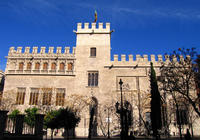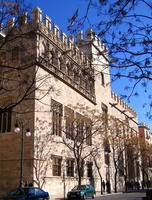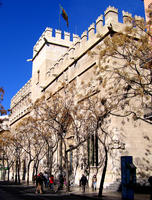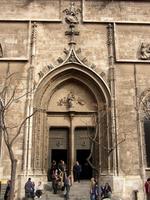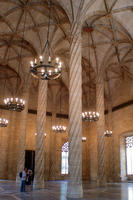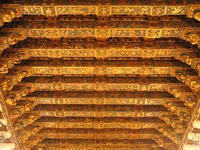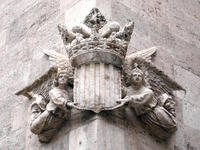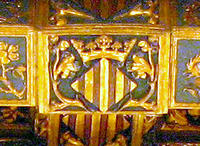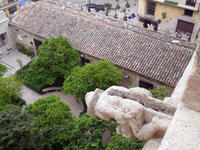You are in: Europe -> Spain -> La Lonja de la Seda ... , and traditional search or Image Gallery will yield results of this site only
La Lonja de la Seda de Valencia
| Site number: | 782 |
|
| Type of site: | Cultural | |
| Date: | 1482-1533 | |
| Date of Inscription: | 1996 | |
| Location: | Europe, Spain, Province and Autonomous Community of Valencia | |
Up to 75 images are shown here. Click on each for more details or on Image Gallery for more images.
| Description: | Always having been a centre for commerce La Lonja de la Seda de Valencia, constructed between 1482 and 1533, is an assembly of buildings, which was originally employed for trading in silk (therefore the name, the Silk Exchange). It is a masterwork of the late Gothic architectural style. Above all, the ostentatious Sala de Contratación (Contract or Trading Hall) demonstrates a major Mediterranean mercantile city’s power and wealth in the 15th and 16th centuries. --WHMNet paraphrase from the description at WHC Site, where additional information is available. | |
| The Lonja de la Seda (English: Silk Exchange; Valencian: Llotja de la Seda) in Valencia is a late Gothic style civil building, built between 1482 and 1548, and one of the principal tourist attractions in the city. The UNESCO considered it as a World Heritage Site in 1996 since "the site is of outstanding universal value as it is a wholly exceptional example of a secular building in late Gothic style, which dramatically illustrates the power and wealth of one of the great Mediterranean mercantile cities." Behind the current building, there was an earlier one from the Fourteenth Century, which was called the Oil Exchange (Llotja de l’Oli, in Valencian, or Lonja del Aceite, in Spanish). It was used not only for trading with oil, but for all kind of business. The commercial prosperity that Valencia reached during the Fifteenth Century led to the construction of a new building. The design of the new Lonja of Valencia was derived from a similar structure in the Lonja of Palma de Majorca, built by the architect Guillem Sagrera in 1448. The architect in charge of the new Lonja was Pere Compte (1447-1506), who built the the main body of the building -the Trading Hall or Sala de Contractació (in Valencian)- in only fifteen years (1483-1498). So is written in a blue band that runs along all four walls of the Trading Hall, also called Hall of Columns. It proclaims in golden letters the following inscription: Inclita domus sum annis aedificata quindecim. Gustate et videte concives quoniam bona est negotiatio, quae non agit dolum in lingua, quae jurat proximo et non deficit, quae pecuniam non dedit ad usuram eius. Mercator sic agens divitiis redundabit, et tandem vita fructur aeterna. It is to say: I am an illustrious house built in fifteen years. Try and See, fellow-citizens, how negotiation is such a good thing when there is no lie in the speech, when it swears to the neighbour and does not deceive him, when it does not lend money with an interest charge for its use. The merchant who acts this way will prosper galore and at the end he will enjoy the eternal life. According to the local Valencian scholar Joan Francesc Mira, this inscription showed that it was not a necessary to be a puritan, a protestant or a Germanic to establish the basis of a good trade; it also showed the union of ethics and economy. Other construction and decoration works lumbered on until 1548, such as the Consolat del Mar (Consulate of the Sea), a Renaissance buiding adjoined to La Lonja. During subsequent centuries, La Lonja functioned as a silk exchange. The honesty of its traders is honored by the inscription that runs around the main contract hall. --Wikipedia. Text is available under the Creative Commons Attribution-ShareAlike License. | ||
| Source: | http://whc.unesco.org/en/list/782 | |
| Reference: | 1. UNESCO World Heritage Center, Site Page. | |


